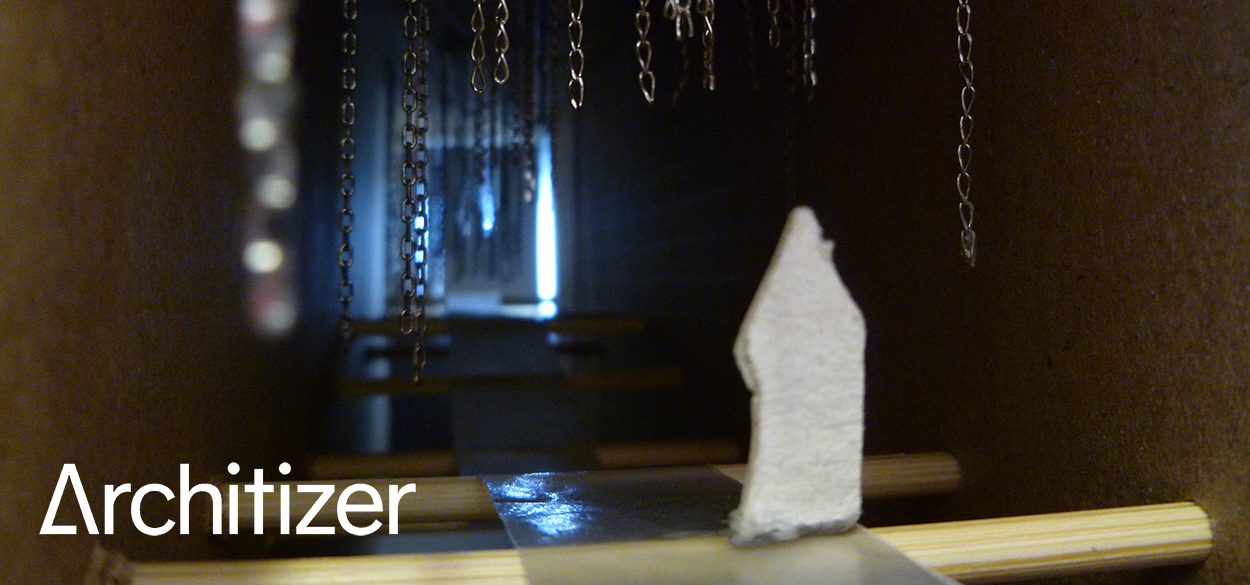When Writers Become Architects: An Experiment In Space And The Written Word

By AJ Artemel
Writing has long been intrinsic to the practice of architecture, from Vitruvius’s Ten Books on Architecture to the theoretical essays of Peter Eisenman. Writing helps architects explain ideas that are hard to glean from drawings alone, and allows for the setting out of non-project-specific agendas in manifestos or magazines, such as Le Corbusier’s L’Esprit Nouveau. Theoretical writers have engaged with architecture, as well; Jacques Derrida, for example, used architectural metaphors to describe the structures of texts and advised architects on the Parc de la Villette competition. Architects have also figured as characters in works of fiction, perhaps most memorably in Ayn Rand’s The Fountainhead. But rarely has architecture served the same function for writing as writing has served for architecture: to analyze and clarify.
This past spring, Columbia University School of the Arts writing students set out to do just that, in Professor Matteo Pericoli’s workshop, the Laboratory of Literary Architecture (Pericoli has also taught the course at the Scuola Holden in Turin for the past four years). The thirteen students each started with a literary work they knew well, and carefully stripped away its language to reveal the structures and spaces that organize it. These hierarchies, sequences, and literary volumes were then translated into architectural models with the assistance of Columbia architecture students (see the projects below). Under Pericoli’s instruction, students strove to represent the literary, not the literal.
The inspiration for the models starts with reading. As Professor Pericoli writes, “When I read a novel, an essay, or some well-structured (other than well-written, of course) piece of writing, there is a moment when I have the feeling that I am inhabiting a structure that goes beyond its words, that was somehow built (I am not sure how consciously) by the writer. And I am not talking about settings described in the book.” But the hope is that analyzing literature with architecture will eventually help students become better writers. Pericoli adds, “What matters, I think, is that [students] realize that creating a piece of writing in your mind can be a spatial and structural exercise—before, during or after you have begun to put actual words on paper. For a writer, thinking wordlessly may turn out to be a positive experience.”
While the class is specifically intended to develop writers’ ability to think spatially, the architectural outcomes of the class show the students’ strong understanding of space, and how to manipulate it with surfaces and volumes. The designs range from sparse and ethereal pavilions to models that seem well on their way to becoming buildings. Many of the pavilion designs adopt a memorial-like simplicity, adhering to a few cuts in the ground or a group of walls. This similarity may stem from the need to create spaces for the narratives of the reader or the visitor (in the students’ explanatory essays, these are often one and the same), or from that elusive sense of architectural poetics.
The more building-like projects seem to stem from works in which the author sets forth a strong, repetitive or clear structure, as in David Foster Wallace’s “A Supposedly Fun Thing I’ll Never Do Again.” The power of this structure is more easily conveyed into floorplates, stairs, and elevator shafts, and sheds light on how architects themselves might go about diagramming an initial idea.
The Laboratory of Literary Architecture succeeds in bringing writing and architecture closer together than ever, by equipping writers with an architect’s vision and mode of analysis. Architects can learn from this experiment, too; perhaps architecture schools should reintroduce writing classes where possible, in order to teach architects how to think in narrative, in metaphor, and ultimately, to translate these concepts into imaginative spatial structures.
Read the piece and look at project photos and texts from Architizer:
https://architizer.com/blog/inspiration/industry/when-writers-become-architects/





